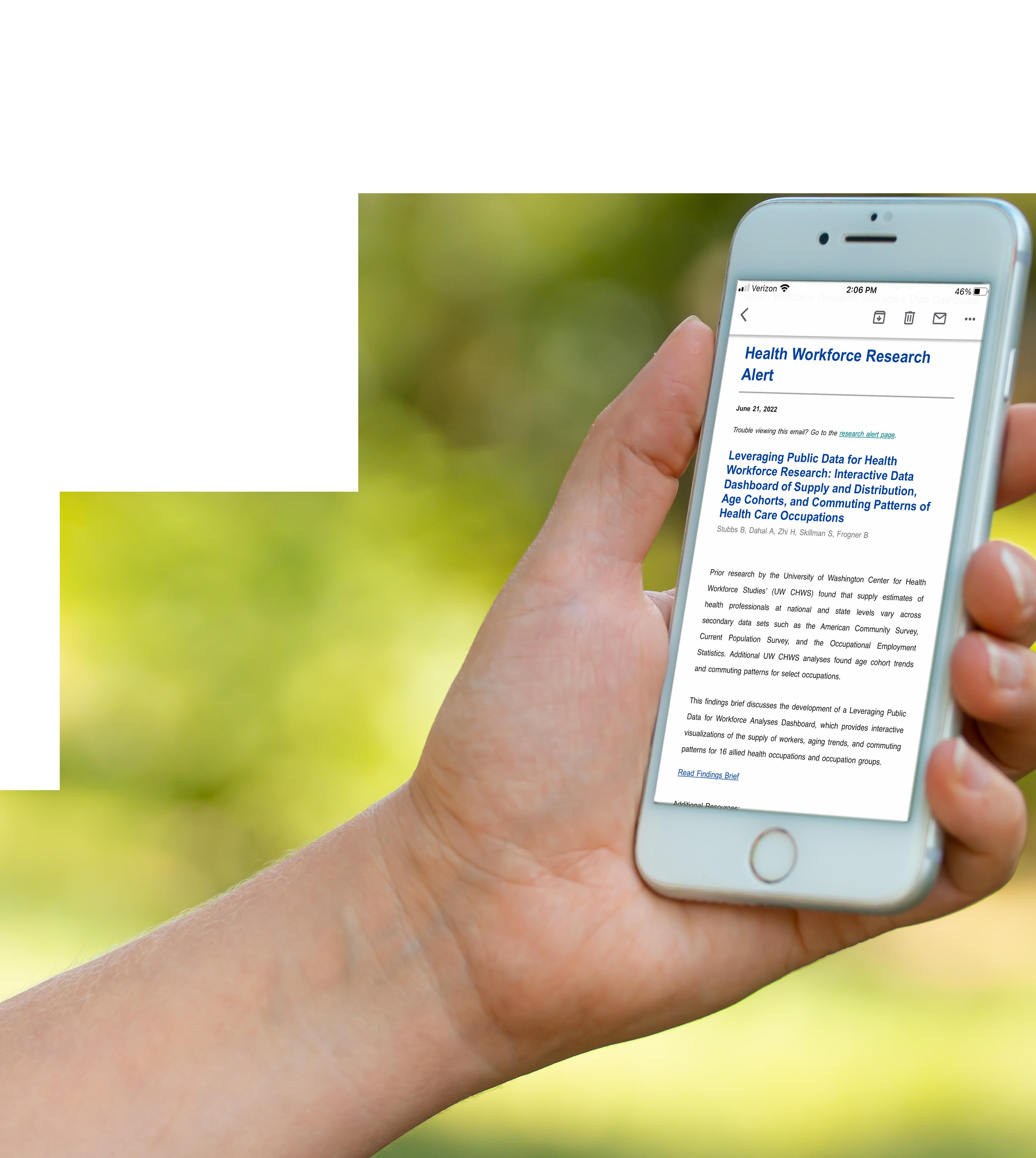HWRCs’ ANNUAL REPORT

A Compilation of Work Produced by the Health Workforce Research Centers (HWRCs)








2022
The Health Resources and Services Administration (HRSA) and its Bureau of Health Workforce (BHW) are committed to ensuring effective, evidence-based planning and poli cymaking, and the 9 HRSA-sponsored Health Workforce Research Centers (HWRCs or Centers) are essential to helping HRSA meet this goal. By conducting and disseminating rig orous research, the HWRCs inform health workforce policy with in-depth research on workforce issues and trends.

In their research and technical assistance roles, the 9 Centers serve as nationally recognized experts on the US health workforce. Through their efforts across multiple workforce segments, they provide essential information and technical assistance to local, regional, state, and federal planners and policymakers.

The HWRC staff have shown resilience during the pandemic. Their ability to adapt to new working conditions and shifting priorities enables them to continue producing important and innovative research during a critical time in the country.
BHW thanks everyone at the HWRCs for their contributions in producing expert health workforce research and tech nical assistance. This work strengthens and enhances the understanding of issues and trends impacting the nation’s healthcare delivery. Looking towards the future, we are excited to continue supporting the HWRCs state-of-the-art applied research.
Forthcoming

As the nation entered the third year of the COVID-19 pan demic, issues surrounding health workforce capacity, resilience, training and education, and scope of practice have captured the nation’s attention. The Centers have adapted to an often-changing landscape to better understand pandemic impacts. They have been tapped by their local and state governments to provide workforce information and expertise and have informed important decision making processes by developing tools and timely workforce data. The HWRCs Headshot carried out more than 50 COVID-related research projects on a wide range of topics, including the impact of the pandemic on workforce resilience, workforce capacity, patient care, telehealth, behavioral health, scope of practice, emergency response, workforce entry and exit, and health equity.
The HWRCs produced over 50 reports and journal articles based on their research and made more than 90 presen tations at national conferences in the first half of 2022. Collectively, this work addressed topics in allied health, behavioral health, health equity and diversity, long-term care, oral health, emerging workforce issues, workforce education, and workforce planning and development.
Luis Padilla, MD Associate Administrator Bureau of Health Workforce Health Resources and Services Administration

......................................................................................................................................... 3
4
Efforts .................................................................................................................................... 5
IN THIS ISSUE INTRODUCTION A Note From HRSA
HRSA HWRC Program
Dissemination
STUDY HIGHLIGHTS
............................................................................................................................................... 6
...................................................................................................................6
.............................................................................................................................8
Displacement and Re-Employment During the
Implications for Direct Care Workforce Recruitment and Retention...................................................................................9 YEAR IN REVIEW Behavioral Health Workforce Research Center ...................................................................................... 11 Allied Health & Health Equity Workforce Research Centers.................................................................. 12 Carolina Health Workforce Research Center .......................................................................................... 16 Health Workforce Equity Research Center & Health Workforce Policy Research Center .................. 18 Health Workforce Technical Assistance Center ...................................................................................... 20 Oral Health Workforce Research Center.................................................................................................. 22 UCSF Health Workforce Research Center on Long-Term Care ............................................................. 24
Tracking Turnover Among Health Care Workers During the COVID-19 Pandemic—A CrossSectional Study
Experiences of Safety-Net Practice Clinicians Participating in the National Health Service Corps During the COVID-19 Pandemic
The Scope of Social Mission Content in Health Professions Education Accreditation Standards .......7 Provider and Patient Satisfaction With the Dental Therapy Workforce at Apple Tree Dental .............7 COVID-19 Webinar Series
Workforce
COVID-19 Pandemic:
A NOTE FROM
2 3
DISSEMINATION EFFORTS
HRSA HWRC PROGRAM
The National Center for Health Workforce Analysis (NCHWA) is a national resource for health workforce research, information, and data. As a division within the Bureau of Health Workforce (BHW) at the Health Resources and Services Administration (HRSA), NCHWA supports policy makers with information and data to help inform decisions regarding health workforce education, training, and healthcare delivery (https://bhw.hrsa.gov/health-workforce-analysis/about).
As part of these efforts, NCHWA oversees HRSA’s Health Workforce Research Center (HWRC) cooperative agreement program, which provides funding to 9 centers in the US. Collectively, these Centers offer expertise in the following arenas:


• Allied health workforce (University of Washington)
• Behavioral health workforce (University of Michigan)
• Emerging health workforce topics (George Washington University; University of North Carolina at Chapel Hill)

• Health equity in health workforce education and training (George Washington University; University of Washington)
• Long-term care workforce (University of California, San Francisco)
• Oral health workforce (State University of New York, Albany)
• Technical assistance (State University of New York, Albany)
2021-2022 HWRC Research Dissemination
5 90+ Presentations 27 Conferences and Meetings 31 Published Journal Articles 21 Reports and Briefs 5 Webinars 4
STUDY HIGHLIGHTS
Tracking Turnover Among Health Care Workers During the COVID-19 Pandemic— A Cross-Sectional Study
Millions of health care workers lost their jobs during the first peak of the pandemic when clinics closed temporarily and hospitals postponed surgeries to prevent the spread of the COVID-19. Although most of those jobs returned by the fall of 2020 and the job market continued to improve, health care employment is still lower than pre-pandemic levels.
This article, funded by the HWRC on Allied Health, compares turn over rates before the pandemic (January 2019-March 2020) with the first 9 months (April 2020-December 2020) and latter 8 months of the pandemic (January 2021-October 2021) to identify which health care workers were at highest risk of exiting the health care workforce during the COVID-19 pandemic.
This ARTICLE published in JAMA Health Forum led to both a PODCAST and BROADCAST INTERVIEW featuring UW CHWS Director Bianca Frogner.

The Scope of Social Mission Content in Health Professions Education Accreditation Standards

Experiences of Safety-Net Practice Clinicians Participating in the National Health Service Corps During the COVID-19 Pandemic
77%
of safety-net
This study examined how the COVID-19 pandemic has affected clinicians who serve low-income, racial, and ethnic minority communities through safety-net practices, including clinicians serving in the National Health Services Corps (NHSC). Investigators conducted a survey of safety-net health care practitioners (including physical, dental, and behavioral health providers) in 20 states to understand their experiences during the pandemic. Of the 1,518 participants, three-quarters (76.6%) reported at-risk levels for burnout. Physical and behavioral health providers reported more symptoms of burnout. Yet, dental providers were more likely to be furloughed or to have reduced hours. Like the patient populations they serve, safety-net clinicians have experienced disrupted work, burnout, and related mental health challenges. These findings encourage national programs that fund and support safety net practice and development policies to ensure safety-net practices that build cultures of support and prioritize clinicians’ work and their mental health needs.
This research resulted in a journal ARTICLE and DATA REPORT.
Accreditation in health professions education influences institutions’ practices and policies, ever-evolving to ensure high-quality education that meets the needs of patients and society. Health professions institutions are beginning to examine their approach to educating health care leaders to advance health equity through their social mission commitments. Social mission is “the contribution of the school in its mission, programs, and the performance of its graduates, faculty, and leadership in advancing health equity and addressing the health disparities of the society in which it exists.” This study examined the scope of social mission content in major US and Canadian health professions accreditation standards.
This research resulted in an ARTICLE in Academic Medicine.
SOCIAL MISSION:
Contributions to advancing health equity and addressing health disparities


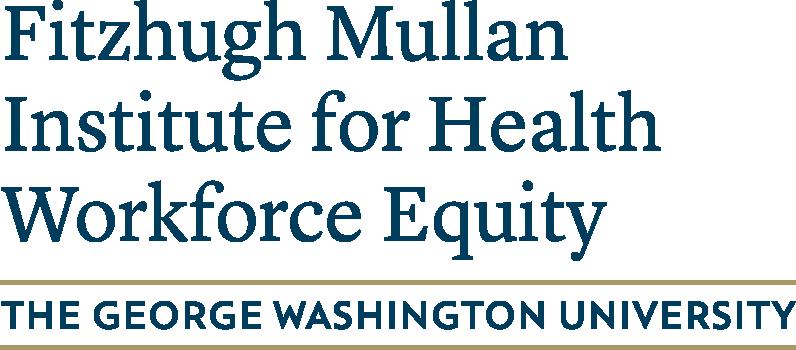
Provider and Patient Satisfaction With the Dental Therapy Workforce at Apple Tree Dental



Dental therapy is a workforce model that introduces mid-level practi tioners—dental therapists—with both preventive and restorative skills. The introduction of dental therapists appears to improve access to and equity in dental service delivery in the US. In this study, OHWRC researchers assessed the satisfaction of clinical providers, organizational administrators, and patients with dental therapists working at Apple Tree Dental in Minnesota, the first US state to authorize dental therapy prac tice statewide. Apple Tree Dental was among the first employers of dental therapists, employing them since 2012.
Findings include the results from 2 surveys. The first survey conducted February-April 2021 assessed clinician and administration satisfaction with the use of dental therapists on oral health teams at Apple Tree Dental. The second assessed patient satisfaction with their clinical providers making comparisons across provider type and was conducted February-August 2021.
This research resulted in a REPORT and an INFOGRAPHIC. Both were featured in Dentistry Today.
health providers were “at-risk” levels for burnout
6 7
STUDY HIGHLIGHTS
COVID-19 WEBINAR SERIES


COVID-19’s Effect on Access to Care for Underserved Populations: An Examination of Telehealth and Provider Attrition
This webinar explores the use of telehealth and general access to care for under served populations both before and during the COVID-19 pandemic. Presenters discuss analysis of 3 unique data sets to examine: 1) Is use of telehealth associated with greater access to care before or during the pandemic?; 2) Is payment parity for telehealth associated with greater use at community health centers before and during the pandemic?; and 3) Did primary care providers leave the workforce in increasing numbers during the pandemic?

How Did State Governor Directives Change Healthcare Workforce Flexibility in Response to COVID-19?
The onset of the COVID-19 pandemic created significant surges in patients and short ages of medical staff, supplies, and space. In times of heightened population health needs, the health workforce must have the ability to respond quickly and efficiently without legal restrictions.
This webinar examines governor-issued executive orders that expanded scope of-practice or reduced regulatory barriers for out-of-state healthcare practitioners during the COVID-19 pandemic.


Immediate and Long-Term Economic Impacts of the Pandemic on the Nursing Workforce
Utilizing data from monthly population surveys, this webinar examines employment trends throughout the US health care delivery system, as well as employment and earnings trends of registered nurses (RNs), licensed practical nurses, and nursing assistants. Presenters discuss whether trends differ by employment setting and by different characteristics of the nursing workforce. Preliminary estimates of future growth of the RN workforce will be explored, and presenters identify threats to entry/exit from this workforce in coming years.
Workforce Displacement and Re-Employment During the COVID-19 Pandemic: Implications for Direct Care Workforce Recruitment and Retention
Demand is rising for direct care workers (including personal care aides, home health aides, and nursing assistants), but recruit ment and retention challenges are widespread. While the COVID-19 pandemic has greatly exacerbated these challenges, it has also created a new labor pool comprising millions of workers who have been displaced from occupations with similar entry-level requirements and potentially overlapping job characteristics. However, little is known about whether and how these displaced workers could be re-employed in direct care jobs. To fill this knowledge gap, this study addressed 3 research questions:
1. How many direct care workers and workers from other occupations with similar entry-level requirements became unemployed during the first 3 months of the COVID-19 pandemic?
2. To what extent do the knowledge, skills, work activities, and work context of displaced workers’ previous occupations align with those of the 3 direct care occupations?
3. How many displaced workers re-entered the workforce (including into direct care jobs) within the following year, and from which previous occupations?
Findings from this analysis inform a set of policy and practice recom mendations for making direct care jobs more attractive to a range of job seekers (including workers who have been displaced from other occupations), creating or strengthening pipelines into direct care jobs, and developing tailored workforce supports for new segments of this workforce.
This research resulted in a REPORT.
“13.7 million workers from occupations with similar entry-level requirements to direct care were displaced from their jobs in the first 3 months of the pandemic”
8 9
WORK FROM THE
Behavioral Health Workforce Research Center
Telebehavioral Health During the COVID-19 Pandemic: A Qualitative Analysis of Provider Experiences and Perspectives
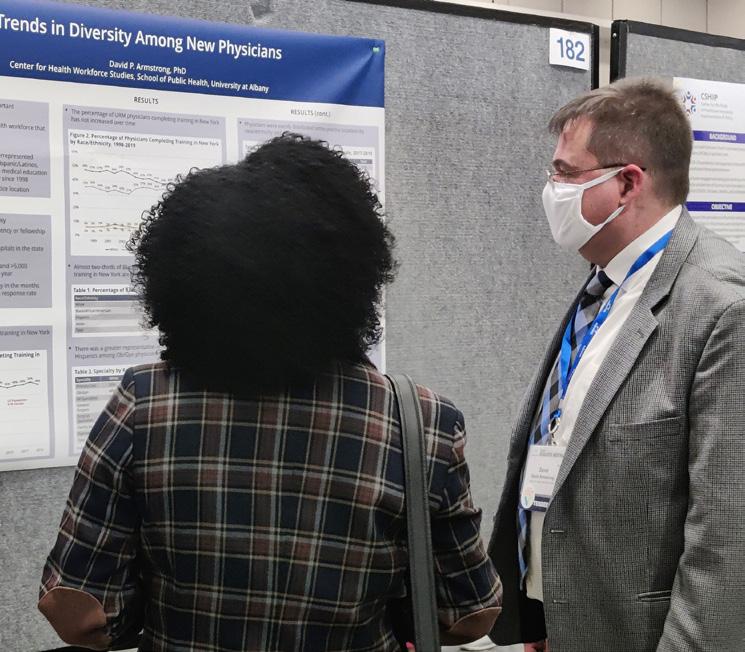
Due to the COVID-19 pandemic and recent federal and state policy shifts impacting behavioral health care delivery, the use of telebehavioral health has rapidly increased. This growth appears to be here to stay and research must be conducted on what this means for the field.

This article describes behavioral health provider perspectives on the use of telebehavioral health before and during the pandemic, as well as how policy changes impacted access to and utilization of behavioral health services in Michigan.

Social Work Answers the (Video) Call: Tele-Behavioral Health Use During COVID-19






The COVID-19 pandemic greatly disrupted access to and the delivery of behavioral health services for many social work providers and their clients. This disruption, coupled with the authorization of tele-behavioral health ser vices through Medicaid, Medicare, and other insurance providers, created a dependence on tele-behavioral health to provide and receive services.
This article examines the use of tele-behavioral health by social workers before and during the COVID-19 pandemic, as well as the perceived barriers and supports to technology use.
Find these studies and more at www.behavioralhealthworkforce.org
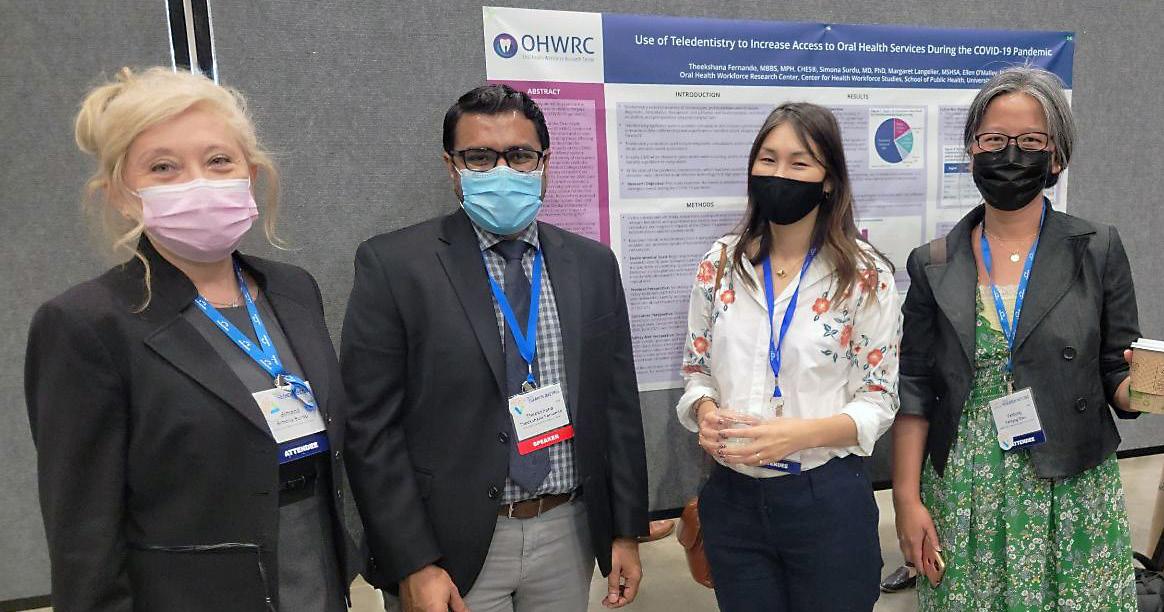
10
11
ALLIED HEALTH HWRC PRODUCTS
Allied Health Workforce Research Center
Leveraging Public Data for Health Workforce Research: Interactive Data Dashboard of Supply and Distribution, Age Cohorts, and Commuting
Patterns of Health Care Occupations
Prior research by the University of Washington Center for Health Workforce Studies’ (UW CHWS) found that supply estimates of health professionals at national and state levels vary across secondary data sets such as the American Community Survey, Current Population Survey, and the Occupational Employment Statistics. Additional UW CHWS analyses found age cohort trends and commuting patterns for select occupations.

This research led to the development of a Leveraging Public Data for Workforce Analyses Dashboard, which provides interactive visualizations of the supply of workers, aging trends, and commuting patterns for 16 allied health occupations and occupation groups. A findings brief discussing this dashboard was also developed.

How Actual Practice of Emergency Medical Services Personnel Aligns With the Recommended National Scope of Practice in Rural Versus Urban Areas of the US

The National EMS Scope of Practice Model is a blueprint for states to develop scopes of practice for emergency medical services (EMS) practitioners. It is intended to reduce inconsistencies between states and provide a basis from which national standards of care and performance for each level of EMS practitioner can be developed. Such standards can help reduce health disparities and improve patient outcomes.
This report examines the extent to which EMS professionals perform skills that correspond to the national model credential levels. Variations in adherence to model guidelines between agencies serving rural versus urban populations and agencies with volunteer versus paid staffing models is also explored.
Employers’ Perspectives on the Use of Medical Pathways to Registered Nursing: Influences of HealthAssistant Apprenticeships Related Work Experience and Education Financing


Medical assistants (MAs) are among the fastest-growing occu To meet growing demand, address social determinants of pations in the US. However, there are high turnover rates and health, and improve health equity, a larger and more diverse providers have difficulty filling MA positions. Employers are registered nurse (RN) workforce is needed in the US. To do so, increasingly using apprenticeship to meet emerging work it is important to understand current pathways and barriers force needs. to becoming an RN.
An Examination of Health Care Workers in Nonstandard Work Arrangements and Self-Employment
Nonstandard work arrangements includes overlapping concepts of: 1) contingent work (based on self-employment status, length of work, method of payment, and connection to employer), 2) alternative work (ie, temporary agency worker, on-call worker, contract company worker, and independent contractor), and 3) electronically-mediated work (sometimes referred to as “gig work”). Between 1995 and 2015 the healthcare industry experienced one of the fastest growths in nonstandard work arrangements. However, there is little doc umentation on which health care occupations are frequently involved in these work arrangements, or the characteristics of these workers.
This report examines healthcare workers in self-employment, contingent, and alterna tive nonstandard work categories, identifies occupations involved in these types of work, and discusses workers’ personal characteristics.
This article discusses a qualitative study that examined
This article examines prior health perspectives of 14 employers using registered MA appren- care employment and financial ticeships in 8 states. Findings included motivations for using assistance factors associated apprenticeship, perceived benefits to the organization, chal with completion of pre-licen lenges with implementation, and reflections on successful sure RN education programs, implementation. by initial entry degree (asso ciate degree or bachelor of science in nursing) and across racial and ethnic groups.
Find these studies and more at https://familymedicine.uw.edu/chws/
WORK
THE
FROM
13 12
Health Equity Workforce Research Center

HEALTH EQUITY HWRC PRODUCTS
Health Workforce Challenges Impact the Development of Robust Doula Services for Underserved and Marginalized Populations in the United States
Research has shown evidence of doulas’ positive impacts on maternal health outcomes, particularly among underserved pop ulations. Such research supports expanding access to doula services. However, health workforce-related barriers challenge the development of robust doula services in the US.
This article published in the Journal of Perinatal Education investigates organizations’ barriers regarding training, recruitment, andemployment of doulas.
Examining Wage Disparities by Race and Ethnicity of Brief Online Implicit Bias Education Increases Bias Health Care Workers Awareness Among Clinical Teaching Faculty
Studies have shown that wage disparities exist across race Implicit bias of healthcare providers often influences patient and ethnicity within selected health care occupations. These care. Bias awareness is a key element included in implicit bias wage disparities negatively affect the industry’s ability to education and can help motivate behavior change. recruit and retain a diverse workforce in varying fields.
This article discusses a study that evaluated whether expo
This article aims to determine whether wage disparities by sure to a brief online course on implicit bias increased bias race and ethnicity persist across health care occupations and awareness for health providers. whether disparities vary across the skill spectrum.
COVID-19 and the Rural Health Workforce: The Impact of Federal Pandemic Funding to Address Workforce Needs
The COVID-19 pandemic has intensified long-standing workforce issues and further weakened the financial position of many rural health facilities as they have attempted to mobilize their work force while struggling to absorb the added costs of patient care and invest in the additional resources needed for pandemic response. The federal government has addressed some of these issues through pandemic funding support and economic relief packages.

This policy brief describes workforce challenges faced by rural health care delivery systems and how pre-pandemic financial instability in rural health care facilities may have contributed to the challenges experienced by the rural health workforce during the pandemic. Available federal pandemic funding to address rural health workforce needs is also discussed, as well as the long-term needs of the rural health workforce and delivery system.
“This Work That We’re Doing Is Bigger Than Ourselves”: A Qualitative Study With Community-Based Doulas in the United States
Community-based doulas provide essential services and expertise which address inequities and systemic gaps in perinatal care. However, as they work to improve perinatal health, doulas themselves are providing equity work amidst an inequitable system and with insufficient political or financial support. Increased compensation and systemic support which acknowledges the breadth of services provided are needed to strengthen and sustain this critical part of the perinatal workforce.
This article published in Perspectives on Sexual and Reproductive Health examines the work experiences, related stressors, and stress management strategies of individual community-based birth doulas.
Background Checks and the Health Workforce: Practices, Policies, and Equity
Background checks are intended to ensure a quality workforce, but they may also exclude qualified workers. Though these background checks may appear straightforward, they rely on information from a variety of sources, and are governed by a complex regulatory environment. Various laws, industry norms, and court precedents shape what background information is gathered and/or maintained.
This report examines why and how background checks on the health workforce are used; the broad variation of laws, regulations, and policies that govern them; their potential misuse; and ways to use background checks to help ensure patient safety while supporting health workforce development.

Addressing Systemic Racism in Birth Doula Services to Lack of Consistent Investment in Federal Insurance Reduce Health Inequities in the United States Navigator Program Undermines Navigators’ Equity
Work in Vulnerable Communities Birth doulas, who support pregnant women during the peri natal period, have positive impacts on pregnancy and birth Navigators in the federal Insurance Navigator Program outcomes, particularly among underserved populations. provide enrollment assistance, outreach, and education to However, health workforce-related barriers challenge the individuals who are eligible for health insurance coverage. development of robust doula services in the United States. Their work is key to public health efforts to address inequities but continues to be poorly understood and undervalued. This article examines various approaches to train, recruit, and employ doulas, as well as what system-level changes are This article examines the navigator profession to better needed to address health inequities in underserved commu- understand the equity work they do, the training and skills nities and expand access to birth doula services. required, and the Navigator Program-based challenges they face.
Find these studies and more at https://familymedicine.uw.edu/chws/
WORK
THE
FROM
14 15
Carolina Health Workforce Research Center
Frontline, Essential, and Invisible: The Needs of Low Wage Workers in Hospital Settings

During COVID-19
The COVID-19 pandemic has caused significant stress among health care professionals, and health systems are actively seeking ways to support the wellbeing of their workforce. Discussions about burnout often focus on doctors and nurses, however, lower paid, essential workers provide equally important services to patients and employees. Frontline workers in low-wage positions are more likely to be women, immigrants, and people of color.
This policy brief discusses the unique experiences of these low-wage health workers based on findings from in-depth qualitative interviews in 3 states (CA, CO, NC) with workers in environmental services, food services, and patient transport roles. This study was con ducted in collaboration with the UCSF Health Workforce Research Center for Long-Term Care.
Addressing Burnout Among the Frontline Healthcare Workforce During COVID-19: A Scoping Review and Expert Interviews
As the COVID-19 pandemic continues, so do the levels of stress, burden, and burnout of health care workers. Researchers at the Carolina Health Workforce Research Center conducted a scoping review of published literature on burnout interventions implemented for healthcare workers during COVID-19, as well as expert interviews with healthcare administrators involved in COVID-19 burnout response efforts.
This article discusses burnout prevention and reduction strategies at the individual, organizational, and community system levels, often related to communication, role shifting, and wellness initiatives.
The Institutional, Professional, and Societal Drivers of Job Satisfaction and Wellbeing Among Physicians
Despite recent research on wellbeing in medicine, much of it fails to address the broader structural factors that contribute to physician satisfaction and wellbeing. To address that gap, researchers used a novel socio-ecological framework adapted from a National Academies of Science, Engineering, and Medicine’s “systems model,” and conducted interviews with 65 attending physi cians and residents, medical students, and clinic staff or administrators.
This policy brief examines the interplay between individual, institutional, professional, and sys tems-level factors in shaping physicians’ responses to their work conditions across the career span, from medical students to attending physicians, and offers suggestions for policy interventions at various structural levels.
Find these studies and more at go.unc.edu/CHWRC
What Do EHRs Tell Us About How We Deploy Health Professionals to Address the Social Determinants of Health
Health providers often attempt to capture social determinants of health (SDOH) in elec tronic health records (EHR) and use these data to adjust care plans. Standardizing SDOH documentation in the EHR across members of the health workforce may help ensure that patients’ social risk factors, including food and housing insecurity, are addressed.
This article assesses how well EHR documentation identifies which health professionals act to address patient SDOH and what interventions are conducted.
Which Definition of Rurality Should I Use? The Supporting the Dynamic Careers of Licensed Practical Relative Performance of 8 Federal Rural Definitions in Nurses: A Strategy to Bolster the Long-Term Care Identifying Rural-Urban Disparities Nurse Workforce
Different definitions of “Rural” and "Urban” generate widely As the US population ages and the demand for long-term care varying results when applied to areas and populations. The increases, an insufficient number of licensed practical nurses degree of disparity between the 2 groups is sensitive to the (LPNs) is expected in the nursing workforce. Understanding specific characteristics included in any definition as well as the the characteristics of LPN participation in the workforce is geography or population that is considered. essential to address this challenge.
This article explores 8 federal rural definitions and the degree This article compares and contrasts 2 LPN career patterns for to which they identify the same areas as rural. Rural-urban a better understanding of how to support the workforce. disparities across socioeconomic, demographic, and health
access and outcome measures are also evaluated.
Experience of Physician Assistants and Nurse Practitioners in Onboarding Programs
Newly graduated nurse practitioners (NPs) and physician assistants (PAs) face challenges in adapting to their first jobs. Because of this, some organizations are instituting formal NP and PA onboarding programs, which have been associated with increased engagement of NPs/PAs, decreased turnover, and higher clinical productivity.

This policy brief examines which components of NP and PA onboarding programs are successful and why, highlighting 6 structural components and 2 psychosocial components that employers and managers could incorporate into their onboarding programs.

WORK
THE
FROM
17 16
Health Workforce Equity & Policy Research Centers

Medical Care Journal Supplement
The Effect of National Health Service Corps Clinician Staffing on Medical and Behavioral Health Care Costs in Community Health Centers
Previous studies of community health centers (CHCs) have found that clinicians supported by the National Health Service Corps (NHSC) provide a similar number of primary care visits per full-time clinician as non-NHSC clinicians, as well as supply additional behavioral health care visits per clinician than nonNHSC clinicians.
This article examines the contributions of NHSC and nonNHSC clinicians to medical and behavioral health costs per visit in CHCs.
Coronavirus Disease 2019 Planning and Response: A Tale of 2 Health Workforce Estimator Tools
As the COVID-19 pandemic surged throughout the United States, increased demand for health workers led to the implementation of health workforce data and tools to aid planning and response at local, state, and national levels.
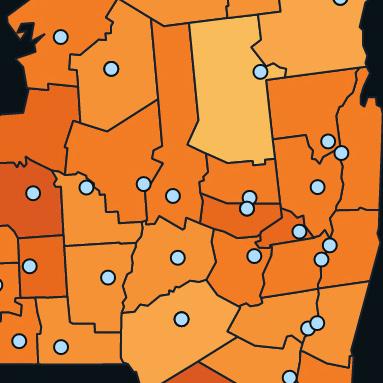
This article describes the development of 2 estimator tools— the State Hospital Workforce Deficit Estimator and the Contract Tracing Workforce Estimator—designed to inform health workforce planning during COVID-19.
The Use of Community Health Workers in Community Health Centers
Community health centers (CHCs) are the cornerstone of primary care for 29 million people, most of whom are low-income, underserved, and live in rural populations. Until 2016, CHCs reported community health workers (CHWs) as part of their overall enabling services workforce, making it difficult to report CHW use in the annual Uniform Data System (UDS).
This article examines changes in the CHW workforce among CHCs from 2016 to 2018 and factors associated with the use of CHWs.
The Use of Medical Scribes in Primary Care Settings: A Health Workforce for Health Equity Literature Synthesis
Health disparities have worsened over the last 20 years in the United States, and research has exposed the role of health Clerical burdens have impacted primary care providers that
are already facing changes to the healthcare landscape and workforce shortages. These pressures have negative implications for patient care and result in burnout and job dissatisfaction. Medical scribes have emerged as a solution to reduce clerical tasks and negative perceptions of patient/provider interactions associated with the use of electronic health records (EHRs).
This article evaluates published research on medical scribe utilization in primary care and safety net settings.
care systems in contributing to these disparities. Based on race/ethnicity, sex, sexual identity, socioeconomic status, and geography, communities face disproportionately higher disparities in access, diagnosis, and treatment, ultimately resulting in adverse health outcomes.
This article examines the role of the health workforce in advancing health equity across 6 interconnected domains.
Find these studies and more at www.gwhwi.org/hwrc.html
Advancing Social Mission Research: A Call to Action
Social mission efforts in health professions education are helping to better prepare graduates with skills to address societal needs. These efforts are designed to strategically increase health equity and address health disparities.

This article provides an overview of the social mission research landscape and a road map for accelerating social mission research.
Alternative Approaches to Ensuring Adequate Nurse Staffing: The Effect of State Legislation on Hospital Nurse Staffing
Studies have shown that sufficient nurse staffing is essential for the delivery of quality care and safe working conditions that are associated with better patient outcomes. As of 2020, 14 states had legislation to increase nurse staffing in hospi tals. The legislation includes 3 main approaches: 1) mandating minimum nurse staffing ratios in hospitals; 2) mandating a staffing committee primarily comprised of registered nurses (RNs); and 3) mandating public reporting of nurse staffing levels.
This article addresses whether alternative legislative approaches are effective in motivating hospitals to increase nurse staffing.
Community Health Center Residency Training: Improving Staffing, Service, and Quality
The Teaching Health Center (THC) program was established in the Affordable Care Act to support new and expanded
community-based primary care residency programs. THC programs are predominantly family-medicine programs located in community health centers, rural health clinics, and tribal health centers.
This article evaluates the impact of new THC residency programs on health center staffing, patient service, quality of care, and provider productivity.
Mapping the Location of Health Centers in Relation to “Maternity Care Deserts”: Associations With Utilization of Women’s Health Providers and Services
According to the March of Dimes, a “maternity care desert” is “a county in which access to maternity health care services is limited or absent, either through lack of services or barriers to a woman’s ability to access that care.” Counties that are considered “limited access” or “deserts” have either limited or no access to hospitals with obstetric care, birth centers, or obstetric providers. Over 7 million women ages 15-44 live in deserts/limited access counties.
This article explores how the distance from a community health center to a maternity care desert impacts utilization of maternity-related health care services.
Limited, Uneven Progress In Increasing Racial and Ethnic Diversity of Dental School Graduates
Black, Hispanic, and American Indian and Alaskan Native populations in the US experience great disparities in both oral health status and access to dental services. Increased diver
sity in the oral health workforce has been shown to decrease access barriers and oral health disparities and increase health care quality and patient satisfaction, specifically for minority populations.
This article evaluates the racial and ethnic diversity of graduates of various dental schools compared to the diversity of the populations they draw from, and assesses national changes over time.
WORK FROM THE
19 18
WORK FROM THE
Health Workforce Technical Assistance Center

Health Professions Regulation in the US
A key goal of health reform in the US is to improve population health through expanded access to health insurance. Demand for high-quality, cost-effective, basic health services is anticipated to grow, particularly for underserved populations. However, there is also growing concern about the impact of health professions scope of practice on access, quality, and cost of health services. Since health professions regulation falls under state jurisdiction, the legal scope of practice for a health profession is typically defined in a state-specific scope of practice act. These acts describe the services that professionals can provide and under what conditions they can be provided. Scope of practice acts also define the requirements for education and training, certification and licensure, and supervision. Restrictive legal scopes of practice often serve as a barrier to effective and efficient delivery of health services.
This webpage on the HWTAC website is updated throughout the year to provide the most up-to date information in regards to scope of practice and regulation for health professions.
Health Workforce Community of Practice
In efforts to bring together a community of state stakeholders—including health workforce planners, researchers, and policy makers—HWTAC organized and hosted virtual meetings to facilitate the sharing of information on topics of interest, including health workforce data collection, analysis, and dissemination. Two virtual meetings were held on health workforce data visual ization, utilizing Tableau and JavaScript. Also to support this community, HWTAC continues to update its State Health Workforce Data Collection Inventory webpage, which describes findings from an ongoing survey about data collection on health workforce supply (eg, demographic, education, and practice characteristics of health professionals), demand (eg, vacancies and employer recruitment and retention difficulties), and the education pipeline (eg, graduation rates and trainee/graduate characteristics).
COVID-19 and the Health Workforce Website
As the health workforce is on the front lines of the Coronavirus pandemic, there has been a critical need to develop effective strategies to assure the availability of a sufficiently sized and well-trained health workforce to care for patients. HWTAC has continued work on its COVID-19 website that was cre ated in 2020 shortly after the pandemic began, which is dedicated to sharing resources on efforts to develop, deploy, and replenish the health workforce in response to the pandemic. HWTAC has continued to monitor publications and conduct web searches daily for relevant developments relating to the impact of COVID-19 on the health workforce. Resources are continually uploaded to the website and updates capturing key findings are sent out via email on a bi-weekly basis. Key areas of focus are evaluated on the regular basis and evolve over time based on findings. Current key areas of focus include vaccine administration, health workforce shortages, telehealth, and health workforce resilience.
The Impact of COVID-19 on Registered Nurse Education Programs in New York and Utah
Registered nursing is one of the largest licensed health care professions in the US, and the registered nurse (RN) workforce continues to grow. However, in 2020, the COVID-19 pandemic had significant impacts on the RN workforce as well as the RN edu cational pipeline. In 2020 a series of questions about COVID-19 was added to annual RN education program surveys conducted in both New York and Utah.


This report assesses the impact of COVID-19 on RN education programs in New York and Utah, helping stakeholders better understand pandemic-related challenges faced by RN education programs and the strategies used to address them.
WEBINARS
Enabling Dental Therapy Practice to Improve Access to Oral Health Services
This webinar discusses the origins and evolution of the dental therapy workforce model, the process of authorizing and implementing dental therapy training and practice in states, and the impacts on patients and providers in Minnesota where dental therapists have been established and integrated

into clinical teams over the last decade.
Disability Competency Training in Medical Education
This webinar presents findings from a study that explores how medical education programs address core competencies used to help guide disability competency training in health care. Facilitators and barriers to integrating disability competency training in medical education are discussed, as well as recommendations for changes.
EXIT SURVEY VIDEO SERIES
Surveying New Health Professionals: An Overview
Surveying New Health Professionals: New York
Surveying New Health Professionals: Indiana
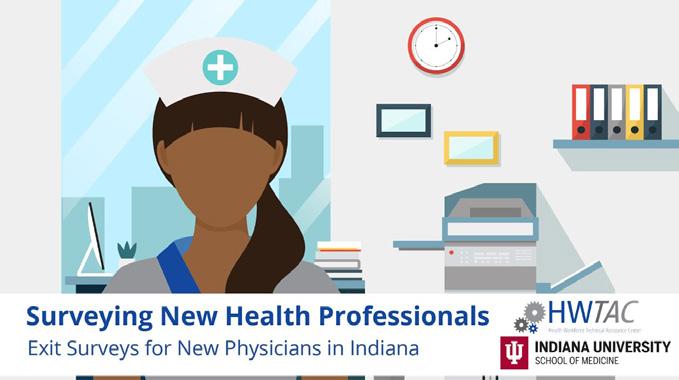
GIS TUTORIAL
How to Develop a Study Area Composed of Different
Geographic Units
Find these studies and more at healthworkforceTA.org
21 20
Oral Health Workforce Research Center
Dental Therapists in the United States: Health Equity, Advancing

Evaluating the Impact of Dentists’ Personal Characteristics on Workforce Participation
With the graduation of more females from dental school, the dental profession is becoming more gender diverse. This study builds on previous OHWRC work on gender diversity in dentistry. Researchers used data from the 2014-2018 American Community Survey (ACS) to evaluate the impact of dentists’ personal characteristics on variation in practice patterns and income.


This report describes demographic and other personal characteristics as well as household/family characteristics of dentists by gender and discusses observed differences in employment participation that might impact service delivery over time.
A Longitudinal Cohort Study of Opioid Prescriptions Associated With Non-Surgical Dental Visits Among Oregon and New York State Medicaid Beneficiaries (2014-2016)
Studies estimate that approximately one-third of all opioid prescriptions (Rxs) from dentists are associated with nonsurgical dental procedures, which suggests unwarranted opioid use.
This article describes a study using administrative claims data from NY and OR (2014-18) to examine opioid Rxs for adult Medicaid beneficiaries with non-surgical dental visits.
Dental Public Health Post-Graduate Trainees in the US: Experiences, Challenges, and Opportunities—A Qualitative Study

Since the 1950’s, health organizations and policymakers have depended on dental public health (DPH) professionals to design and execute local and national oral health strategic plans, and implement community-based programs to overcome barriers and disparities. In the US, DPH specialty programs are used to train DPH professionals to increase the available workforce and improve the community’s oral health through engagement in various government and private sectors.
This article explores the DPH post-graduate trainees’ challenges and opportunities during their
residency programs in the US.
Dental therapists (DTs) are primary care dental providers, used globally, and were introduced in the United States (US) in 2005. DTs have now been adopted in 14 states and several Tribal nations.


This article qualitatively examines the drivers and outcomes of the US dental therapy movement through a health equity lens, including community engagement, implementation and dissemination, and access to oral health care.

A Comparison of Opioid Prescribing Patterns by Dentists
in New York and Oregon, 2014-2016
Dentists are 1 of the top 5 opioid analgesic prescribers among health care professionals in the US. However, most of these prescriptions remain unused after dental surgery, with upwards of 100 million opioid analgesic pills estimated to be left unused.
This report describes dentists’ opioid prescribing patterns for Medicaid beneficiaries in 2 very different states—Oregon and New York—prior to the implementation of several national and state level opioid prescribing guidelines.
Comparison of Dental Care Visits Before and After Adoption of a Policy to Expand the Dental Workforce in Minnesota
Adding new types of clinicians is often a policy strategy to address clinician short ages and enhance access to health care. In oral health, several states have sought to expand the dental workforce to include dental therapists, which are primary dental care providers who can evaluate and treat basic dental conditions under the supervi sion of a dentist. The aim of adding dental therapists to the dental team is to improve the affordability of dental care to expand access for underserved populations, particu larly low-income and uninsured individuals in rural and tribal areas.
This article assesses the changes in dental care use in Minnesota after the implementa tion of the policy to authorize dental therapists in 2009.
Find these studies and more at oralhealthworkforce.org
WORK FROM THE
23 22
UCSF Health Workforce Research Center on Long-Term Care
Impact of Electronic Visit Verification (EVV) on Personal Care Services Workers and Consumers in the United States
The 21st Century CURES Act required that all states implement Electronic Visit Verification (EVV) for Medicaid-funded Personal Care Services (PCS) by January 1, 2020. EVV is a state-implemented system used to verify electronically that a Medicaid PCS worker has arrived on the job and assisted a disabled person with approved PCS tasks. EVV was a response to concerns about fraud, waste, and abuse in Medicaid-funded PCS.
This report explores whether EVV, in representative states, acts as a barrier, facilitator, or a promising practice in terms of supporting and advancing choice, control, community living, and participation for disabled individuals who received Medicaid PCS.
Characteristics of Multiple Job Holders in Long-Term Care
Health care workers in long-term care (LTC) settings often face financial security concerns due to low wages, inconsistent hours, and lack of benefits. As a result, there are higher rates of LTC workers who hold multiple jobs, which can increase workers’ expo sure to COVID-19. Because COVID-19 is an especially serious threat to the frail elderly, the potential for LTC staff to be a primary route of virus transmission is high.
This report examines the rates of multiple job holding and characteristics of multiple job holders in the LTC workforce.
Utilization of Community Paramedics to Respond to The Impact of the COVID-19 Pandemic on California’s the COVID-19 Pandemic Registered Nurse Workforce: Preliminary Data
In the US, some health systems and emergency medical ser During the COVID-19 pandemic, numerous concerns about vices agencies are leveraging the versatility and experience of the nursing workforce have been reported. With a shortage of community paramedics to meet needs for COVID-19 testing, registered nurses (RNs) likely underway now, employers need care, and vaccination. to ramp up their efforts to retain RNs and develop career paths for newly-graduated RNs. They also need to rapidly This report describes models of community paramedic prac develop and implement strategies to mitigate the potential tice that have been utilized in the US during the pandemic harm of shortages over the next 5 years. and discusses changes in law and regulation that would facili tate more widespread adoption of these models. This report reviews the supply and demand of RNs in California and how the COVID-19 pandemic is affecting the nursing workforce.
Find these studies and more at healthworkforce.ucsf.edu
Measuring the Financial Contribution of Peer Providers
Peer support providers are individuals who have been trained to use their personal experiences with mental illness and sub stance use disorders to help others in recovery. Organizations that provide behavioral health treatment are increasingly employing peer support providers as vital team members. Prior studies have focused on evaluating the effectiveness of peer providers in terms of client outcomes and stakeholder perceptions of the peer provider model’s value.
This report, related policy brief, and abstract discuss a study that analyses peer provider staffing data and the financial impli cations for organizations that use a peer services model to provide care. This study was conducted jointly by the UCSF Health Workforce Research Center on Long-Term Care and the Behavioral Health Workforce Research Center (BHWRC) at the University of Michigan.
Prescribing Patterns in Nursing Home Residents Living With Dementia by Specialty and Provider Type
Treating the complex issues of people living with dementia is difficult because behavioral symptoms often occur in combination with pain symptoms. In addition, increasing cognitive impairment and communication challenges exist as dementia severity progresses. Little is known about either the contributions of different clinical specialties in prescribing medications for this popu lation or prescribing patterns by clinical specialty and provider type.
This report and associated abstract examine prescribing patterns for common psychiatric medications and for opioid and nonopioid analgesics in long-term nursing home residents with dementia by clinician specialty and provider type.
The Association of Race, Ethnicity, and Wages Among Registered Nurses in
Long-Term Care
RNs are the largest licensed health profession in the US and a key component of the LTC workforce. RNs who work in LTC settings earn less than those who work in hos pitals and Black and Hispanic RNs employed in urban hospitals earn less than White and Asian nurses, even after controlling for differences in education and experience. However, little is known whether these differences exist in LTC.
This article discusses wage differences between RNs working in LTC (eg, nursing homes, home health) and non-LTC settings (eg, hospitals, ambulatory care) and whether differences are associated with the characteristics of the RN workforce between and within settings.

WORK FROM THE
25 24
HEALTH WORKFORCE RESEARCH ALERTS
